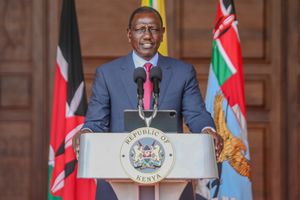Curbing wastefulness key in fighting hunger
What you need to know:
- With four million Kenyans, about seven per cent of the population, absolutely hungry, the government must do all it can to ensure that nobody dies of starvation.
- The best way to win the confidence of donors and attract more aid is to demonstrate prudent management.
- The International Monetary Fund (IMF) has called out Kenya and other African countries over the poorly targeted and wasteful distribution of relief food.
Large areas of the arid and semi-arid regions face hunger and starvation, mainly due to a lack of rainfall during the last four seasons.
With four million Kenyans, about seven per cent of the population, absolutely hungry, the government must do all it can to ensure that nobody dies of starvation.
But it cannot do this alone; hence, donors come in handy. Indeed, the Central Bank of Kenya also agrees that the government urgently needs help from international bodies like the UN’s World Food Programme.
The best way to win the confidence of donors and attract more aid is to demonstrate prudent management.
The International Monetary Fund (IMF) has called out Kenya and other African countries over the poorly targeted and wasteful distribution of relief food.
Also targeted by the IMF are fuel and food subsidies, which even President William Ruto’s administration scrapped as soon as he took office last month.
The IMF also wants food aid and other interventions phased out.
These interventions, however, must give way to measures that enable resources to go to those who need them the most.
Relief supplies tend to create a dependency syndrome that worsens the problem. Subsidies waste public funds by enhancing consumption instead of addressing basic needs.
President Ruto has also declared his preference for measures that boost production, such as the fertiliser subsidy that more than halved the price of a 50kg bag of fertiliser.
That should enable farmers to grow more food during the short rainy season.
In addition to causing massive loss of human life, the raging drought has reportedly wiped out 2.5 million livestock, which is the main source of livelihood in the most affected regions, signalling that a worse situation is looming.
Those without food can also not get anything for their animals as they perish in large numbers with the meat just going to waste.
Part of the solution is to invest in climate-smart agriculture and livestock production and reduce, through irrigation, the over-reliance on the rain-fed growing of cash and food crops.




